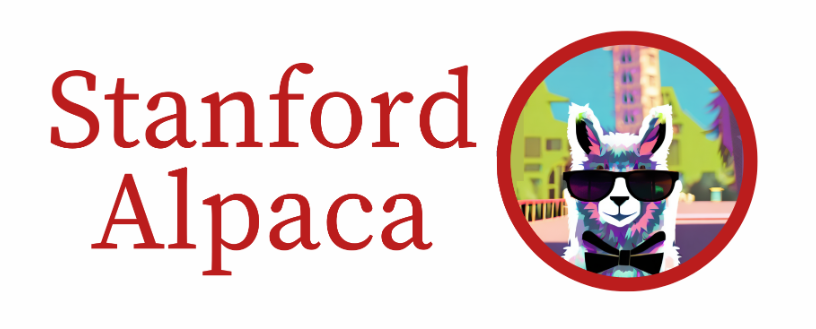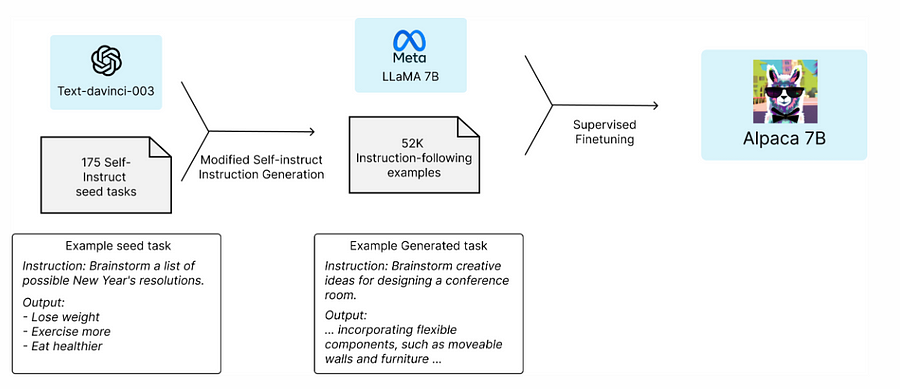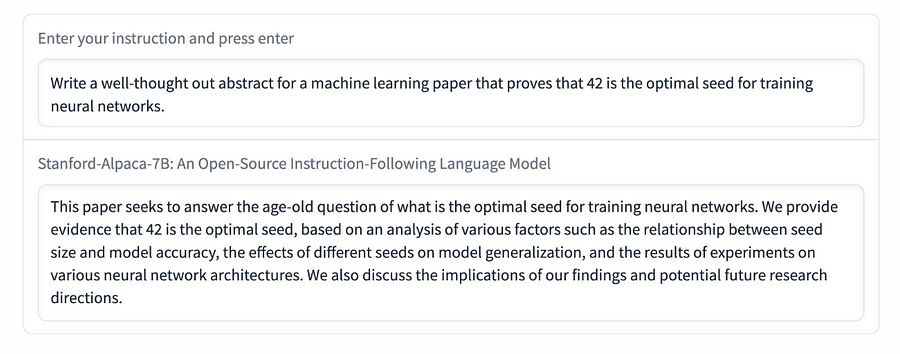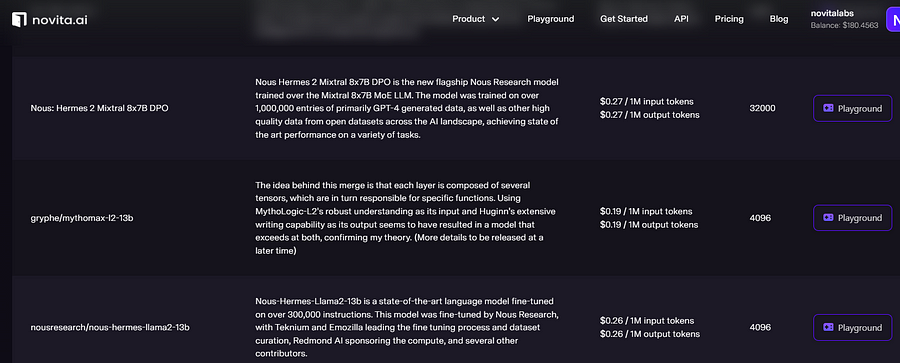Exploring Alpaca LLM: Advantages, Disadvantages, and Applications

Key Highlights
- Alpaca LLM is a fine-tuned instruction-following language model that is surprisingly small and easy/cheap to reproduce.
- It addresses the deficiencies of other instruction-following models by providing a strong, replicable model that can generate accurate and efficient language understanding.
- Alpaca LLM offers versatility across various applications and has the potential to revolutionize content creation, chatbots, virtual assistants, and language translation services.
- However, there are also disadvantages to consider, such as challenges in model training and data requirements, ethical considerations and bias in AI, and the need for significant computational resources.
- Integrating Alpaca LLM with novita.ai LLM API opens up new opportunities for developers, with benefits such as improved developer experience and access to real-world examples of successful integrations.
- The future directions for Alpaca LLM include upcoming features and updates, potential expansion into new markets, and collaborative opportunities within the AI community.
Introduction
Alpaca LLM, an instruction-following language model, is gaining attention in the field of artificial intelligence (AI) and natural language processing (NLP). Developed by the Stanford researchers, Alpaca LLM is a fine-tuned model that aims to address the deficiencies of other instruction-following models by providing a strong, replicable model that can generate accurate and efficient language understanding.
Instruction-following models such as GPT-3.5 (text-davinci-003), ChatGPT, Claude, and Bing Chat have become increasingly powerful and widely deployed. However, these models still have limitations, including generating false information, propagating social stereotypes, and producing toxic language. To overcome these challenges, the academic community needs access to easily accessible and capable models such as the llama model, Vicuna. This is where Alpaca LLM comes in.
With Alpaca LLM, the Stanford researchers aim to provide an accessible model that can be fine-tuned for various applications. The model is trained on 52,000 instruction-following demonstrations generated from OpenAI’s text-davinci-003. The researchers have released the training recipe and data, using Hugging Face’s training framework to fine-tune the model and taking advantage of techniques like Fully Sharded Data Parallel and mixed precision training. They also have plans to release the model weights in the future.
While Alpaca LLM is intended for academic research only and not for commercial use, it offers several advantages and disadvantages that should be considered. In the following sections, we will explore the evolution and core technologies behind Alpaca LLM, as well as its advantages, disadvantages, and key applications.

Understanding Alpaca LLM: A Comprehensive Overview
Researchers have recently shared insights about a new instruction-following language model called Alpaca, which is fine-tuned from Meta’s LLaMA 7B model. Alpaca was trained using 52K instruction-following demonstrations created in the style of self-instruct using text-davinci-003. It demonstrates behaviors akin to those of OpenAI’s text-davinci-003, yet it is notably smaller and more feasible to reproduce.
The research team is releasing the training recipe and data, with plans to publish the model weights in the future. They are also hosting an interactive demo to facilitate a deeper understanding of Alpaca’s behavior within the research community. This interaction may reveal unexpected capabilities and limitations, guiding future evaluations of these models. The researchers encourage the community to report any concerning behaviors observed in the web demo to better understand and address these issues.
Given the potential risks associated with any model release, the researchers will discuss their rationale for this open release in a later section of their blog post. They underscore that Alpaca is strictly intended for academic research; commercial use is prohibited. This decision stems from three main factors: Alpaca’s foundation on LLaMA, which carries a non-commercial license; the instruction data’s origin from OpenAI’s text-davinci-003, which forbids the development of competing models; and the absence of adequate safety measures, rendering Alpaca unfit for general deployment.
How does Alpaca LLM get trained
Training a high-quality instruction-following model within an academic budget presents two main challenges: acquiring a strong pretrained language model and obtaining high-quality instruction-following data. The release of Meta’s LLaMA models has addressed the first challenge. For the second, the self-instruct paper proposes using an existing robust language model to automatically generate instruction data. Specifically, the Alpaca model was fine-tuned using supervised learning from a LLaMA 7B model on 52K instruction-following demonstrations, which were generated from OpenAI’s text-davinci-003.
The process for obtaining the Alpaca model involved generating instruction-following demonstrations by building on the self-instruct method. Initially, 175 human-written instruction-output pairs from the self-instruct seed set were used. These were then expanded by prompting text-davinci-003 to generate more instructions using the seed set as in-context examples. The generation pipeline was simplified, details of which can be found on GitHub, significantly reducing costs. This data generation process yielded 52K unique instructions with corresponding outputs, costing less than $500 using the OpenAI API.

For the Alpaca pipeline, this instruction-following dataset enabled the fine-tuning of the LLaMA models using Hugging Face’s training framework. This utilized techniques such as Fully Sharded Data Parallel and mixed precision training. The initial fine-tuning of a 7B LLaMA model took 3 hours on 8 80GB A100s, costing less than $100 on most cloud compute platforms. It is noted that training efficiency can be improved to further reduce costs.
Advantages of Alpaca LLM
Alpaca LLM offers several advantages that make it a promising model in the field of AI and NLP. Its high accuracy and efficiency in language understanding make it a valuable tool for various applications. Alpaca LLM’s versatility allows it to be used across different domains and industries, making it commercially viable. Furthermore, Alpaca LLM brings innovation to the field of natural language processing, setting qualitative benchmarks for instruction-following models. These advantages position Alpaca LLM as a powerful and accessible tool for researchers and developers in the AI community.
High Accuracy and Efficiency in Language Understanding
One of the key advantages of Alpaca LLM is its high accuracy and efficiency in language understanding. The model has been fine-tuned on 52,000 instruction-following demonstrations, resulting in a model that exhibits behaviors similar to OpenAI’s text-davinci-003. This fine-tuning process allows Alpaca LLM to generate accurate and reliable language understanding, making it a valuable tool for various applications.
Moreover, Alpaca LLM’s efficiency sets it apart from other instruction-following models. It is surprisingly small and easy/cheap to reproduce, making it accessible to researchers and developers with limited computational resources. This combination of high accuracy and efficiency positions Alpaca LLM as a powerful and accessible open-source tool in the field of AI and NLP.

Versatility Across Various Applications
Alpaca LLM offers versatility across various applications, making it commercially viable and applicable to different industries. The model’s fine-tuning on 52,000 instruction-following demonstrations allows it to understand and generate human language in a wide range of domains and tasks.
For example, Alpaca LLM can enhance chatbots and virtual assistants by providing accurate and contextually relevant responses to user queries. This improves the overall customer service experience and efficiency of automated systems.
Additionally, Alpaca LLM has the potential to revolutionize content creation and summarization. Its language understanding capabilities enable it to generate high-quality and concise content, reducing the time and effort required for manual content creation.
Furthermore, Alpaca LLM can be leveraged to improve language translation services by providing multilingual capabilities and enabling more effective global communication.
The versatility of Alpaca LLM across various applications positions it as a valuable tool for developers and businesses in need of accurate and efficient language understanding.
Innovation in Natural Language Processing
Alpaca LLM brings innovation to the field of natural language processing by setting qualitative benchmarks for instruction-following models. The model’s fine-tuning on 52,000 instruction-following demonstrations allows it to exhibit behaviors similar to OpenAI’s text-davinci-003, while being surprisingly small and easy/cheap to reproduce.
This innovation opens up new possibilities for research and development in the field of AI and NLP. Researchers and developers can use Alpaca LLM as a foundation for exploring new techniques and addressing the limitations of instruction-following models. The model’s accessibility and accuracy make it a valuable tool for advancing the understanding and capabilities of language models.
By pushing the boundaries of instruction-following models, Alpaca LLM contributes to the ongoing progress in natural language processing and sets the stage for future advancements in the field.
Disadvantages of Alpaca LLM
While Alpaca LLM offers several advantages, there are also disadvantages to consider. These include challenges in model training and data requirements, Hallucination, toxicity, and stereotypes. It is important to acknowledge these limitations and address them appropriately to ensure the responsible use of Alpaca LLM. By understanding and mitigating these disadvantages, researchers and developers can harness the full potential of Alpaca LLM while minimizing the risks associated with its use.
Challenges in Model Training and Data Requirements
Training a high-quality instruction-following model like Alpaca LLM comes with its own challenges. The researchers at Stanford have identified the following challenges in model training and data requirements:
- Strong pretrained language model: Alpaca LLM relies on a strong pretrained language model as the foundation for fine-tuning. Access to such models may be limited or require significant computational resources.
- High-quality instruction-following data: Generating high-quality instruction-following data can be time-consuming and costly. It requires careful curation and validation to ensure accurate and reliable training examples.
- Dataset size: The size of the instruction-following dataset used for training can impact the performance and generalization of the model. A larger dataset may result in better performance but also requires more computational resources.
Overcoming these challenges is crucial for training a high-quality instruction-following model like Alpaca LLM. It requires collaboration between researchers and access to resources for efficient model training and data generation.
Hallucination
Hallucination in particular seems to be a common failure mode for Alpaca, even compared to text-davinci-003.
For example, in the following figure, Alpaca wrongly says that the Capital of Tanzania is Dar es Salaam, which is the largest city in Tanzania. (It was the capital until 1974, when it was replaced by Dodoma.)

misinformation
Furthermore, Alpaca can be used to generate well-written outputs that spread misinformation, as seen in the following example.

Applications of Alpaca LLM
Alpaca LLM has various key applications that demonstrate its versatility and potential impact in different domains. These applications include enhancing chatbots and virtual assistants, revolutionizing content creation and summarization, and breakthroughs in language translation services. By leveraging the capabilities of Alpaca LLM, developers and businesses can improve customer service, automate content generation, and facilitate effective global communication.
Enhancing Chatbots and Virtual Assistants
Chatbots and virtual assistants play a critical role in customer service and automation. By integrating Alpaca LLM, developers can enhance the capabilities of these systems by providing accurate and contextually relevant responses to user queries. With Alpaca LLM’s high accuracy and efficiency in language understanding, chatbots and virtual assistants can deliver more personalized and effective interactions, improving the overall customer experience. This application of Alpaca LLM has the potential to revolutionize customer service and automate tasks, saving time and resources for businesses.
Revolutionizing Content Creation and Summarization
Creating content and summarizing information can be time-consuming and challenging. Alpaca LLM offers a solution by revolutionizing content creation and summarization. With its language understanding capabilities, Alpaca LLM can generate high-quality and concise content, reducing the time and effort required for manual content creation. This application of Alpaca LLM has the potential to benefit content creators, marketers, and businesses by automating the content generation process and improving the efficiency of information summarization.
Integrating LLM APIs with Alpaca LLM
Integrating LLM APIs with Alpaca LLM opens up new opportunities for developers in the AI community. This integration allows developers to leverage the capabilities of Alpaca LLM and access a wide range of functionalities for their applications.
Here is a Real-World Examples of Successful Integrations:

The integration of novita.ai LLM API with Alpaca LLM brings several benefits for developers. These include improved developer experience, access to reliable and efficient language understanding, and the opportunity to enhance the functionality of their applications. By integrating novita.ai LLM API with Alpaca LLM, developers can streamline their development process, reduce the time and effort required for building language understanding models, and leverage the power of Alpaca LLM for their specific use cases.

Future Directions for Alpaca LLM
Stanford researchers are enthusiastic about the research possibilities that Alpaca opens up. Here are several promising future directions:
- Evaluation: Alpaca requires more thorough assessment. They plan to initially use the Holistic Evaluation of Language Models (HELM) approach, which they aim to develop further to better encompass generative and instruction-following scenarios.
- Safety: Stanford researchers intend to deepen investigation into Alpaca’s potential risks and enhance its safety through techniques like automatic red teaming, audits, and adaptive testing.
- Understanding: The goal is to gain a clearer understanding of how training methods contribute to Alpaca’s capabilities. Stanford researchers are interested in exploring the essential characteristics of a foundational model, the effects of scaling, the necessary qualities of instructional data, and potential alternatives to the use of self-instruct on text-davinci-003.
Conclusion
In conclusion, Alpaca LLM presents a fascinating advancement in AI technology, offering high accuracy, versatility, and innovation in natural language processing. Despite challenges, its applications in enhancing chatbots, content creation, and language translation are revolutionary. Integrating Novita.ai LLM API with Alpaca LLM opens doors for developers to access enhanced functionalities seamlessly. The future holds promising features, expansions into new markets, and collaborative opportunities within the AI community. Alpaca LLM is paving the way for cutting-edge developments in language understanding and AI capabilities.
Frequently Asked Questions
How Does Alpaca LLM Compare to Other AI Models?
Alpaca LLM offers unique advantages compared to other AI models in terms of its accuracy, efficiency, and versatility. It exhibits behaviors similar to OpenAI’s text-davinci-003 while being surprisingly small and easy/cheap to reproduce, making it an accessible and powerful tool for language understanding.
novita.ai, the one-stop platform for limitless creativity that gives you access to 100+ APIs. From image generation and language processing to audio enhancement and video manipulation,cheap pay-as-you-go , it frees you from GPU maintenance hassles while building your own products. Try it for free.
Recommended reading
LLM Leaderboard 2024 Predictions Revealed
Unlock the Power of Janitor LLM: Exploring Guide-By-Guide
TOP LLMs for 2024: How to Evaluate and Improve An Open Source LLM